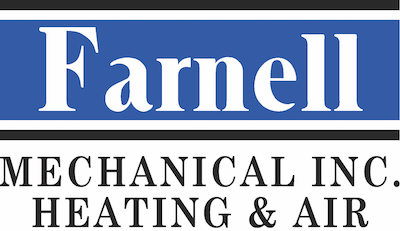
You shouldn’t need to give up comfort or drain your wallet to keep your residence at a pleasant temp during hot days.
But what is the best temp, exactly? We discuss recommendations from energy experts so you can select the best temperature for your house.
Here’s what we recommend for the most energy-efficient setting for air conditioning in Auburn and Opelika.
Recommended Thermostat Settings for Summer
Most people find placing the thermostat at 72-73 degrees is most comfortable. However, if there’s a sizeable difference between your interior and outside temperatures, your electrical expenses will be greater.
These are our recommendations based on the U.S. Department of Energy (DOE) and ENERGY STAR®.
While at home: 78 degrees. While that seems warm, there are approaches you can keep your house pleasant without having the air conditioner running constantly.
Keeping windows and blinds closed during the day keeps cold air where it belongs—within your home. Some window solutions, like honeycomb shades or plantation shutters, are designed to provide added insulation and better energy conservation.
If you have ceiling fans in your home, the DOE says you can increase thermostat temps about 4 degrees hotter without sacrificing comfort. That’s due to the fact they refresh by a windchill effect. Since they cool people, not spaces, shut them off when you exit a room.
If 78 degrees still feels too warm on the surface, try doing a test for a week or so. Begin by increasing your thermostat to 78 degrees while you’re at your house. Then, steadily turn it down while using the suggestions above. You could be surprised at how cool you feel at a higher temperature setting.
While away: 88 degrees. There’s no reason to keep the AC working all day while your residence is vacant. Turning the temp 7–10 degrees higher can save you an estimated 5–15% on your AC bills, according to the DOE.
When you come home, don’t be tempted to set your thermostat under 78 to cool your house more rapidly. This isn’t effective and typically produces a more expensive electrical cost.
A programmable thermostat is a useful method to keep your temp in check, but it requires setting programs. If you don’t utilize programs, you run the risk of forgetting to move the set temperature when you take off.
If you want a hassle-free remedy, think about buying a smart thermostat. This thermostat works with with your phone, so it knows when you’re at your residence and when you’re out. Then it instinctively modifies temperature settings for maximum savings. How much exactly? Usually $180 annually on heating and cooling, according to ENERGY STAR.
Another perk of using a smart thermostat? You can use your phone to keep an eye on and change temperature settings from just about anywhere.
While sleeping: Around 70 degrees. While ENERGY STAR advises 82 degrees, that could be too uncomfortable for many families. Many people sleep better when their sleeping space is chilly, so that’s why the National Sleep Foundation advises 60–67 degrees. But that may be too cool, depending on your clothing and blanket preference.
We recommend running a similar test over a week, moving your temperature higher and slowly lowering it to pick the ideal temperature for your family. On pleasant nights, you might find keeping windows open at night and using a ceiling fan is a superior option than using the AC.
More Ways to Use Less Energy During Hot Weather
There are added ways you can spend less money on AC bills throughout warm weather.
- Install an energy-efficient cooling system. Central air conditioners only are effective for about 12–15 years and lose efficiency as they age. An updated air conditioner can keep your residence more comfortable while keeping electricity expenses down.
- Book regular air conditioner service. Routine air conditioner maintenance keeps your system running like it should and might help it work at greater efficiency. It might also help extend its life expectancy, since it allows professionals to pinpoint little problems before they cause a major meltdown.
- Switch air filters frequently. Read manufacturer instructions for switching your air filter. A dusty filter can cause your system to short cycle, or switch on and off too much, and increase your electricity.
- Inspect attic insulation levels. Almost 90% of houses in the U.S. don’t have enough insulation, according to the Insulation Institute. Most southern climates should have 13–14” of attic insulation, while northern climates require 16–18”.
- Have your ductwork examined. Ductwork that has come apart over time can let cool air into your attic, walls or crawl space. This can create huge comfort troubles in your home, like hot and cold spots.
- Seal openings, doors and windows. Keep humid air where it should be by plugging holes. You can also caulk or weather strip doors to keep more cold air inside.
Use Less Energy This Summer with Farnell Mechanical, Inc.
If you need to save more energy during warm weather, our Farnell Mechanical, Inc. professionals can provide assistance. Give us a call at 334-524-2458 or contact us online for more details about our energy-saving cooling products.
